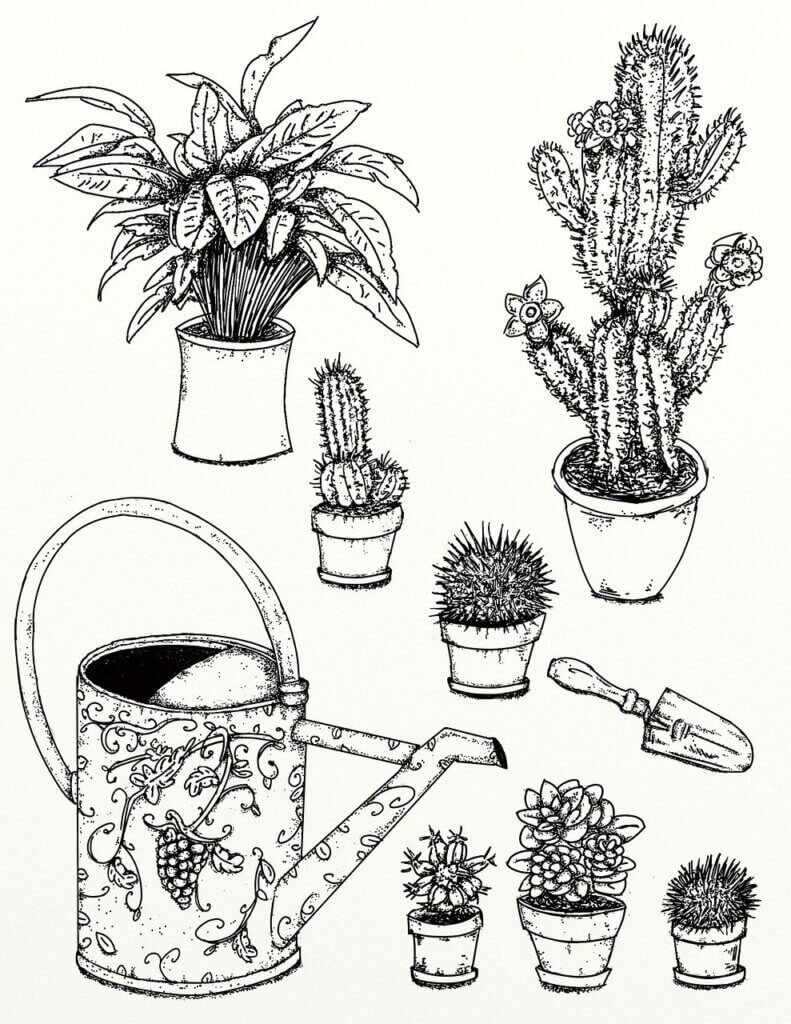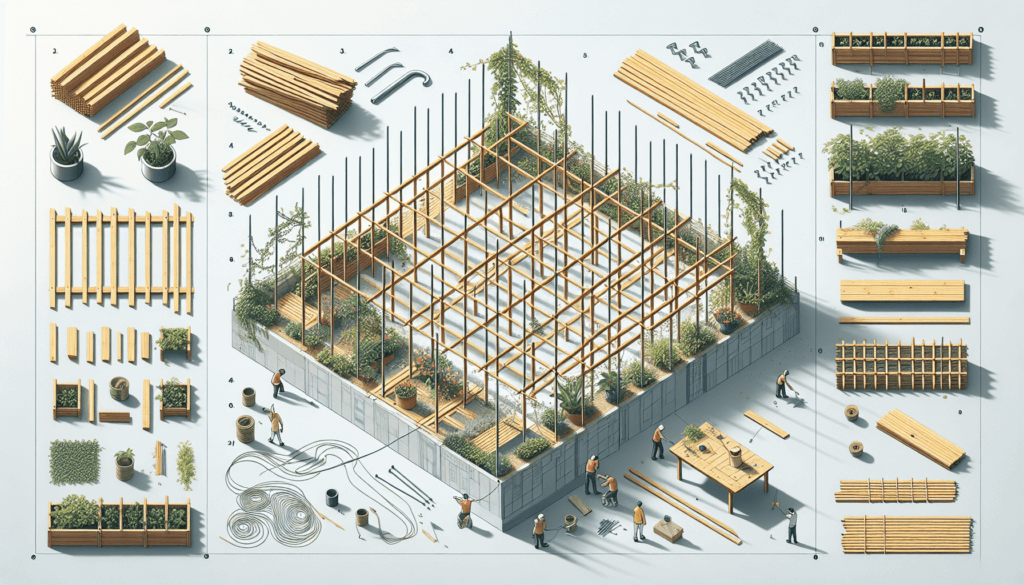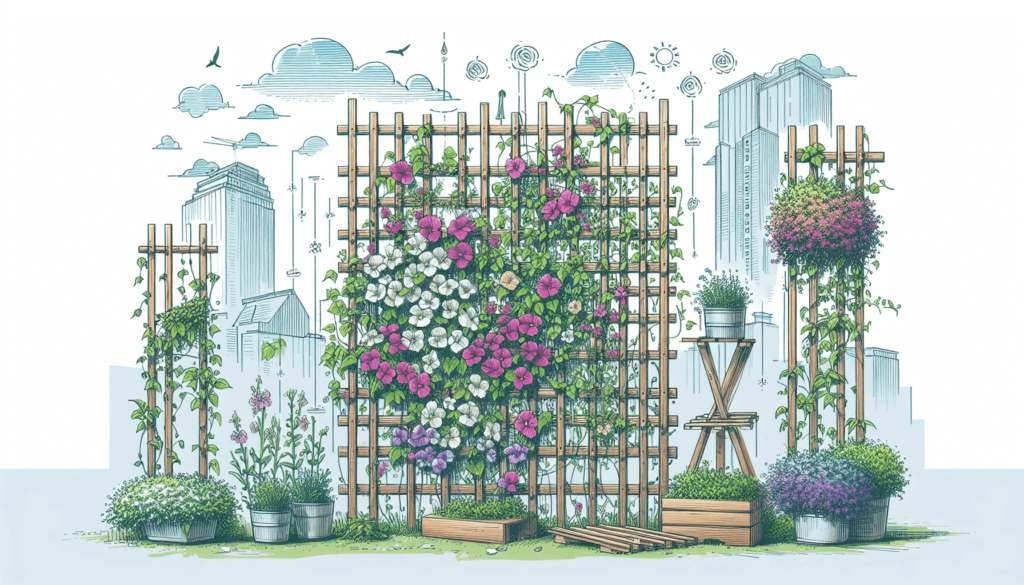Do you have a green thumb and a small urban garden? If so, you might be wondering how to best utilize the limited space you have to grow beautiful climbing plants. Look no further! In this article, we will show you step-by-step instructions on how to build a trellis specifically designed for your urban garden. By following these simple guidelines, you’ll not only create a functional and sturdy trellis, but also enhance the aesthetic appeal of your outdoor space. So, grab your gardening tools and get ready to create a vertical oasis for your climbing plants.
Choosing the Right Location for Your Trellis
When it comes to choosing the perfect location for your trellis, there are a few key factors to consider. First and foremost, you need to think about the sunlight requirements of your plants. Different climbing plants have different needs when it comes to sunlight, so it’s important to choose a location that provides the right amount of sun exposure. Take some time to study your garden and observe which areas receive the most sunlight throughout the day. This will help you determine the best spot for your trellis.
Another important consideration is the available space in your urban garden. Some climbing plants can grow quite large and may require a substantial amount of space to thrive. Take into account the dimensions of your trellis and the potential size of the plants you plan to grow. Make sure you choose a location that allows sufficient room for the plants to spread out and climb.
Lastly, don’t forget to take into account the wind direction and intensity in your garden. Strong winds can cause damage to both the plants and the trellis structure. Therefore, it’s best to choose a location that offers some protection from the wind, such as placing the trellis against a sturdy fence or wall.
Selecting the Materials for Your Trellis
Now that you have chosen the perfect location for your trellis, it’s time to gather the materials needed for its construction. There are several options to consider when it comes to the framework of the trellis.
Wooden stakes or bamboo poles can make excellent choices for the main support structure of the trellis. They are sturdy, durable, and readily available. Make sure to choose poles or stakes that are long enough to accommodate the height you desire for your trellis.
For the actual support for your climbing plants, you can choose between galvanized wire or nylon netting. Galvanized wire is strong and provides good support for the plants, while nylon netting is soft and gentle on delicate vines. Both options can be securely attached to the trellis framework.
To assemble the trellis, you will need screws or zip ties, depending on the materials you have chosen. Screws are a more permanent option, providing extra stability, while zip ties offer flexibility and ease of assembly.

Preparing the Ground for Your Trellis
Before you start building your trellis, it’s important to prepare the ground properly. Begin by clearing the area of any debris or vegetation that may obstruct the installation of the trellis. This will ensure a clean and even surface for your trellis to stand on.
Next, take the time to amend the soil if necessary. Some climbing plants thrive in well-draining soil, while others prefer a richer, loamy soil. Depending on the needs of your plants, you may need to add organic matter, such as compost or peat moss, to improve the soil quality.
Once the area is clear and the soil is prepped, mark the positions for the trellis posts. Use a tape measure and stakes to mark the desired locations and ensure they are evenly spaced. This will help you maintain a symmetrical and balanced trellis structure.
Building the Frame of Your Trellis
Now that the ground is prepared, it’s time to start building the frame of your trellis. Begin by measuring and cutting the wooden stakes or bamboo poles to the desired height. Make sure to leave enough length at the bottom to insert them securely into the ground. A saw or a pair of sturdy garden shears will come in handy for this step.
Next, attach the stakes or poles together to form the frame of the trellis. Use screws or zip ties, depending on the materials you have chosen. Make sure the connections are secure and the frame is sturdy enough to support the weight of the climbing plants.
For added stability, consider adding diagonal supports to your trellis. This can be done by attaching additional stakes or bamboo poles diagonally across the frame. This will help prevent the trellis from swaying or collapsing under the weight of the plants.

Adding the Support for Climbing Plants
With the frame of your trellis complete, it’s time to add the support for your climbing plants. Begin by determining the spacing for the wire or netting. This will depend on the type of plants you are growing and their growth habits. Some plants require closer spacing for support, while others can be spaced farther apart.
Once you have determined the spacing, attach the wire or netting to the trellis frame. For wire, use clips or staples to secure it tightly to the frame. If you are using nylon netting, use zip ties or twine to attach it securely.
When attaching the support, make sure it is taut and securely fastened. This will prevent sagging or collapsing of the trellis under the weight of the climbing plants. It is important to ensure a solid and stable support structure to promote healthy growth and prevent damage.
Installing the Trellis in Your Urban Garden
With the trellis fully constructed, it’s time to install it in your urban garden. Begin by digging holes for the trellis posts. The depth of the holes should be at least one-third of the length of the posts to ensure stability. Make sure the holes are evenly spaced according to your marked positions.
Next, carefully insert the posts into the holes, ensuring they are straight and aligned. Use a level to check for any discrepancies and make adjustments as needed. Once the posts are in place, backfill the holes with soil and tamp it firmly around the posts. This will provide additional stability and support for the trellis.

Training Climbing Plants on the Trellis
Now that your trellis is installed, it’s time to start training your climbing plants to grow on it. Gently guide the plants towards the trellis, making sure to avoid any damage to the delicate vines. Allow the plants to naturally attach themselves to the support structure, or use plant ties or clips to secure them loosely.
Regularly check and adjust the plant growth to ensure they are properly trained on the trellis. This involves gently redirecting any vines that may be growing in the wrong direction and ensuring they are evenly distributed across the support. By maintaining proper training, you can encourage healthy growth and prevent overcrowding.
Maintaining and Pruning Your Climbing Plants
To ensure the success and longevity of your climbing plants, proper maintenance and pruning are essential. Water the plants regularly, providing adequate moisture to keep them healthy and hydrated. Depending on the specific plant species, it may be beneficial to provide additional nutrients through fertilization.
Monitor your plants for any signs of pests or diseases. Inspect the leaves, stems, and flowers regularly, and take immediate action if any issues are detected. This may involve the use of organic pest control methods or seeking expert advice to address specific problems.
Pruning is an important aspect of maintaining climbing plants. Regularly remove any dead, diseased, or damaged parts of the plants to encourage healthy growth and shape. Additionally, prune to manage the size and density of the plants, preventing excessive growth and overcrowding on the trellis.

Considering the Aesthetics of Your Trellis
While functionality is important, considering the aesthetics of your trellis can greatly enhance the overall look of your urban garden. Choose a trellis design that complements your garden style and the surrounding landscape. There are various options available, from simple and minimalist designs to ornate and decorative structures.
If desired, you can also add a decorative touch to your trellis by painting or staining it. Consider colors that harmonize with your existing garden palette or choose a bold hue to create a focal point. Proper preparation and application of the paint or stain will ensure longevity and durability, protecting the trellis from the elements.
To further enhance the aesthetics of your trellis, consider adding additional elements such as hanging baskets or fairy lights. Hanging baskets filled with colorful flowers can create a stunning visual display when paired with climbing plants. Fairy lights can add a magical ambiance to your garden, especially in the evenings or during special occasions.
Troubleshooting Common Issues with Trellises
Despite careful planning and execution, trellises can encounter common issues that may require attention. One common issue is instability or leaning. This can be caused by strong winds, improper installation, or the weight of the plants. To address this problem, consider reinforcing the trellis with additional supports or adjusting the position to provide more stability.
Another issue that may arise is plant overcrowding or excessive growth. If the climbing plants become too dense or start to overwhelm the trellis, it’s important to prune and thin them out. Removing excess foliage and redirecting the growth can help maintain a balanced and healthy trellis structure.
In cases where trellis components become damaged or worn over time, it may be necessary to repair or replace them. Check for any loose screws, broken stakes, or damaged wire or netting. Address these issues promptly to ensure the structural integrity of the trellis and the safety of your climbing plants.
Building a trellis for climbing plants in your urban garden is a rewarding and fulfilling project. By choosing the right location, selecting suitable materials, and properly maintaining your trellis, you can create a stunning vertical garden that adds beauty and functionality to your outdoor space. Follow these steps and enjoy the beauty of climbing plants flourishing on your trellis for years to come.



